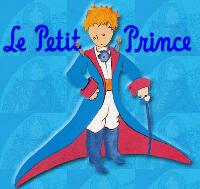CLAYMANIA
THE GOLEM (1920) An archetypal story, told many times in literature & film. One of its first cinematic expressions was in THE GOLEM, made in Germany in 1920.The film is based on a medieval Jewish legend about a clay figure that is brought to life, an amoral monster ,who turns against his master, nearly destroying him.
Rabbi Loew (Albert Steinruck) sees danger in the stars for the Jews in the Prague ghetto in the year 1580 & so begins building the Golem (who looks like a cross between a Neanderthal & a totem) to serve as a protector of the Jews. The prophecy is fulfilled as Emperor Rudolf II (Otto Gebuhr) issues an edict stating that the Jews must leave Prague before the end of the month. He believes that the Jews have started a plague in the city. Through prayer, a circle of fire rises to engulf Rabbi Loew .In a trance-like state he is told that if he places the magic word "Aemaet", the Hebrew word for "truth" or "God," in an amulet upon the Golem's chest, the creature will come to life. If the amulet is removed, the creature becomes inanimate again.The Rabbi then brings the Golem (director Paul Wegener) to the Emperor. The Emperor commands Loew to perform a feat of magic,but as he shows them his vision of the Exodus of the Jews, the courtiers laugh.The building suddenly begins to crumble. Just as the building is about to collapse, the Golem saves them by holding up the ceiling with his hands. The Emperor agrees to rescind his edict against the Jews.
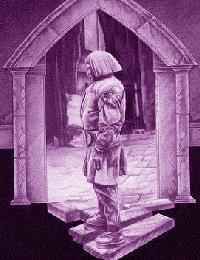
Wegener's acting in THE GOLEM is subtle as a force of nature without conscience or emotion,capable only of brute force; therefore violence is inevitable. He quickly learns that he can remain alive if he refuses to let anyone take the amulet .The Rabbi's daughter Miriam is in love with Florian, one of the emperor's courtiers. In a powerful scene, the Golem dismissively tosses him from the roof of a building & drags Miriam by her braided hair through the narrow stone streets of Prague.
The scene in which the Golem plays with a group of children in a combination of innocence & malevolence would find a parallel in the later FRANKENSTEIN.
THE GOLEM is a hypnotic German Expressionist vision of life as a waking dream. Dim light & looming shadow were photographed by Karl Freund, who also shot Fritz Lang's Metropolis & F.W. Murnau's The Last Laugh. Freund later emigrated to America & eventually became head cameraman for I Love Lucy.
Hans Poelzig's stylized sets convey the claustrophobia of ghetto life, with curved stone walls & sharply pointed roofs. Wegener portrays supernatural elements of the story without irony or psychological explanation, true to the atmosphere of medieval Prague, when many people would have believed that an incantation could bring a clay figure to life.
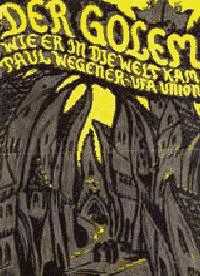
It is impossible for a modern audience to watch this film without an awareness of the even greater horror soon to be inflicted upon the Jews of Europe.Wegener remained in Germany during the war,turning his talents to producing & acting in Nazi propaganda films, eventually winning a commendation from Propaganda Minister Josef Goebbels. 69 mins. NFVLS.
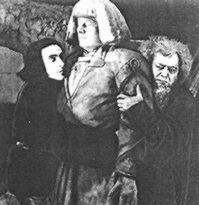
Darkness. A hand turns on a light switch, illuminating a small roomwith two doors & a window. There is a knock at the other door. Thehand crosses the room & opens it. Two eyeballs roll in... We seecreatures literally emerging from the primordial ooze (significantly,no attempt is made to disguise the fact that they are made out of clay- & Svankmajer & animator Bedrich Glaser are quite capable of morerealistic work if need be, as the likes of Another Kind of Love &Food demonstrate), forming themselves into strange & primitivelife-forms before "evolving" into a fully-formed human being. But atwhat cost? He is completely unable to leave the room (he is much toobig to make any use of doors or window) & he is virtually unable tomove without causing painful cramps. Given that disintegration intothe body's original component parts is presumably not an option (or atleast not in accordance with traditional concepts of "evolution"), hehas in effect evolved into an endangered species, capable of only onedecisive action - turning out the light. http://www.illumin.co.uk/svank/films/darkness/darkness.html
Awards: 1990- Special Jury Prize, Berlin. Golden Dragon, Cracow.Honourable Mention, Zagreb. Festival Grand Prix, Espinho. 1991- YouthJury Second Prize, Odense. CINEGRAM Prize, Vevey. Kratky Film(Prague)/Jiri Trnka Studio. Wr. des. dir. Jan Svankmajer. Prod. AlenaDetakova. Phot. Miloslav Spala. Ed. Vera Benesova. Anim. BedrichGlaser. Snd. Ivo Spalj. 7 mins. NFVLS.
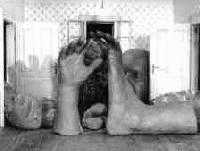
Crooning peanut JIMMY CARTER warbles "Georgia On My Mind", backed up by a chorus-line of leggy singing legumes. Academy AwardŽ/TM (1977)nomination. - James Picker; Robert Grossman; Craig Whitaker. 3 mins.CAC.
BUTTERFLIES IN FORMATION (1985)
Humorous clay animation film that shows people how to prepare a speech& use their nervousness to their own advantage. 8 mins. NFVLS.
A CHRISTMAS GIFT (1980)
Clay animated film by Will Vinton capturing the spirit of Christmas,where the happiest Christmas is shared by a young boy & an old ladyover a simple candle-lit dinner of cheese, bread & wine.
Based onthe song entitled 'Christmas Dinner' by PAUL STOOKEY, (of Peter, Paul& Mary 'fame'). 9 mins. CAC.

A really funny claymation treatment on the theme of going to themovies, where the audience rolls up to watch a "teaser" promotionalfilm about the joys of cinema.
Dir.& anim. Carl Surges (animationeffects: John Carpenter's The Thing, 1982). 4 mins. CAC
SEXY SLUT (1989)
Riotous claymation by Sarah Von Rompaey (4 mins.)
THE GREAT COGNITO (1982)
This short fires visuals at the viewer rapidly from the beginning.Nominated for an Academy Award, it's a marvelous example of just howfar one can take stop-motion Claymation. The visuals come at you quitefast & furious over what is a very brief cartoon & it's one ofWill Vinton's best efforts. "Presented in 3-Dimation!"
WillVinton. Wr. Susan Shadburne. 5 mins. CAC.
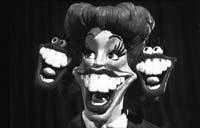
A claymation version of Antoine de Saint-Exupery's story about alittle prince who leaves his tiny planet in search of friends. He eventually reaches Earth, where a fox teaches him the secret ofresponsibility. An aviator forced down in the Sahara Desert encountersthe Little Prince, who relates his interplanetary travels & thelessons he has learned about life. References to well known paintings& imaginative animation techniques are employed throughout thisfilm. Narrated by CLIFF ROBERTSON. *Gold Hugo - Best in Animation -Grand Prix of Festival - Chicago International Film Festival. Prod.Will Vinton.
